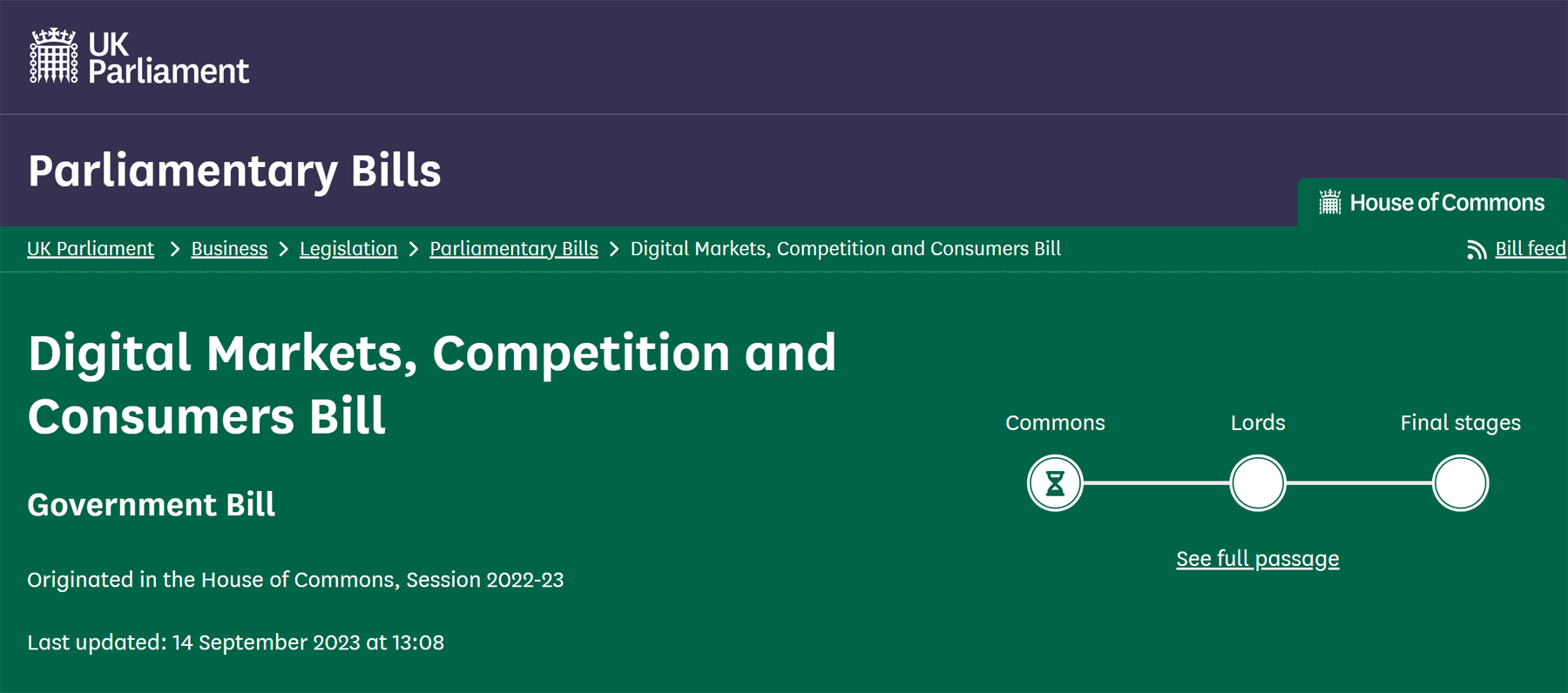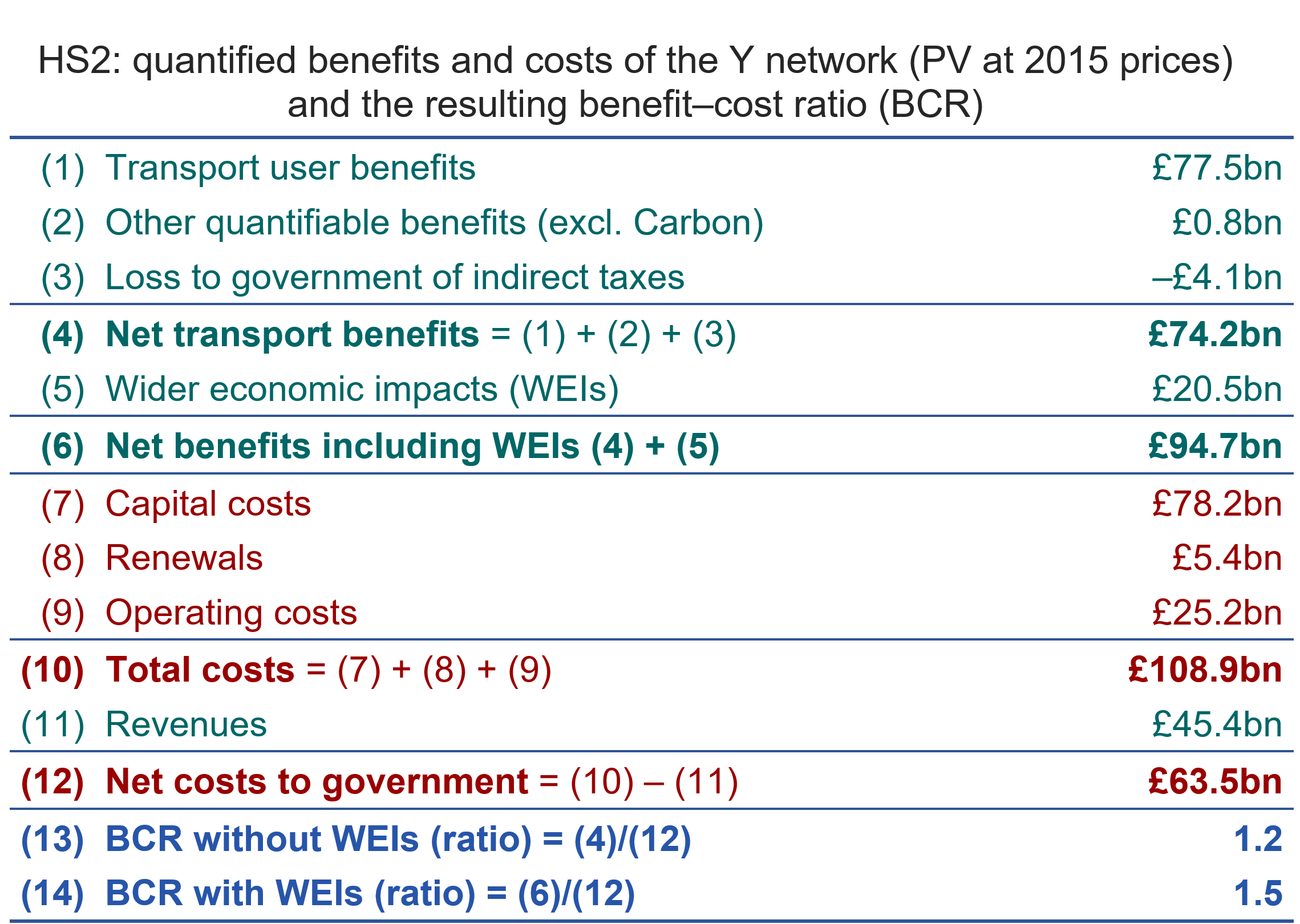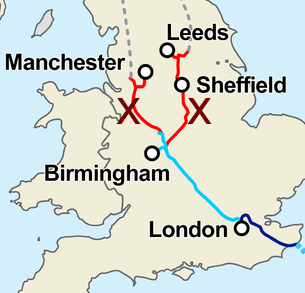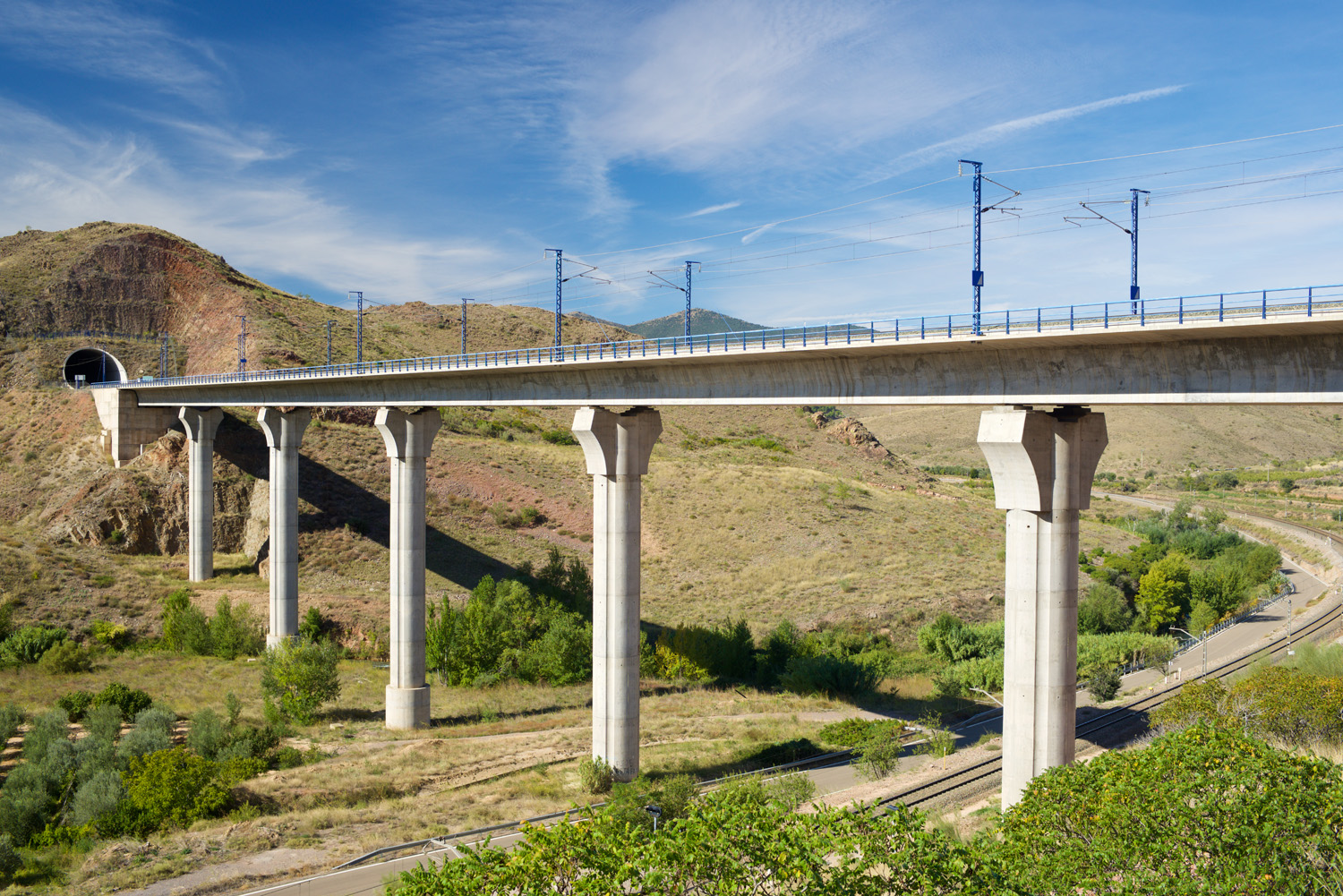
Politicians, business leaders, climate scientists, interest groups and journalists from across the world have been meeting in Dubai at the COP28 climate summit (the 28th annual meeting of the Conference of the Parties (COP) to the United Nations Framework Convention on Climate Change (UNFCCC)). The meeting comes at a time when various climate tipping points are being reached or approached – some bad, but some good. Understanding these tipping points and their implications for society and policy requires understanding not only the science, but also the various economic incentives affecting individuals, businesses, politicians and societies.
Tipping points
A recent report (see first reference in articles section below) identified various climate tipping points. These are when global temperatures rise to a point where various domino effects occur. These are adverse changes to the environment that gather pace and have major effects on ecosystems and the ability to grow food and support populations. These, in turn, will have large effects on economies, migration and political stability.
 According to the report, five tipping points are imminent with the current degree of global warming (1.2oC). These are:
According to the report, five tipping points are imminent with the current degree of global warming (1.2oC). These are:
- Melting of the Greenland ice sheet;
- Melting of the West Antarctic ice sheet;
- Death of warm-water coral reefs;
- Collapse of the North Atlantic Subpolar Gyre circulation, which helps to drive the warm current that benefits Western Europe;
- Widespread rapid thawing of permafrost, where tundra without snow cover rapidly absorbs heat and releases methane (a much more powerful source of global warming than CO2).
With global warming of 1.5oC, three more tipping points are likely: the destruction of seagrass meadows, mangrove swamps and the southern part of the boreal forests that cover much of northern Eurasia. As the temperature warms further, other tipping points can interact in ways that drive one another, resulting in tipping ‘cascades’.
But the report also strikes an optimistic note, arguing that positive tipping points are also possible, which will help to slow global warming in the near future and possibly reverse it further in the future.

The most obvious one is in renewable energy. Renewable power generation in many countries is now cheaper than generation from fossil fuels. Indeed, in 2022, over 80% of new electricity generation was from solar and wind. And as it becomes cheaper, so this will drive investment in new renewable plants, including in small-scale production suitable for use in developing countries in parts not connected to a grid. In the vehicle sector, improved battery technology, the growth in charging infrastructure and cheaper renewable sources of electricity are creating a tipping point in EV take-up.
Positive tipping points can take place as a result of changing attitudes, such as moving away from a meat-intensive diet, avoiding food waste, greater use of recycling and a growth in second-hand markets.
But these positive tipping points are so far not strong enough or quick enough. Part of the problem is with economic incentives in market systems and part is with political systems.
Market failures
Economic decisions around the world of both individuals and firms are made largely within a market environment. But the market fails to take into account the full climate costs and benefits of such decisions. There are various reasons why.
Externalities. Both the production and consumption of many goods, especially energy and transport, but also much of agriculture and manufacturing, involve the production of CO2. But the costs of the resulting global warming are not born directly by the producer or consumer. Instead they are external costs born by society worldwide – with some countries and individuals bearing a higher cost than others. The result is an overproduction or consumption of such goods from the point of view of the world.
 The environment as a common resource. The air, the seas and many other parts of the environment are not privately owned. They are a global ‘commons’. As such, it is extremely difficult to exclude non-payers from consuming the benefits they provide. Because of this property of ‘non-excludability’, it is often possible to consume the benefits of the environment at a zero price. If the price of any good or service to the user is zero, there is no incentive to economise on its use. In the case of the atmosphere as a ‘dump’ for greenhouse gases, this results in its overuse. Many parts of the environment, however, including the atmosphere, are scarce: there is rivalry in their use. As people increase their use of the atmosphere as a dump for carbon, so the resulting global warming adversely affects the lives of others. This is an example of the tragedy of the commons – where a free resource (such as common land) is overused.
The environment as a common resource. The air, the seas and many other parts of the environment are not privately owned. They are a global ‘commons’. As such, it is extremely difficult to exclude non-payers from consuming the benefits they provide. Because of this property of ‘non-excludability’, it is often possible to consume the benefits of the environment at a zero price. If the price of any good or service to the user is zero, there is no incentive to economise on its use. In the case of the atmosphere as a ‘dump’ for greenhouse gases, this results in its overuse. Many parts of the environment, however, including the atmosphere, are scarce: there is rivalry in their use. As people increase their use of the atmosphere as a dump for carbon, so the resulting global warming adversely affects the lives of others. This is an example of the tragedy of the commons – where a free resource (such as common land) is overused.
Inter-generational problems. The effect of the growth in carbon emissions is long term, whereas the benefits are immediate. Thus consumers and firms are frequently prepared to continue with various practices, such as driving, flying and using fossil fuels for production, and leave future generations to worry about their environmental consequences. The problem, then, is a reflection of the importance that people attach to the present relative to the future.
Ignorance. People may be contributing to global warming without realising it. They may be unaware of which of the goods they buy involve the release of carbon in their production or how much carbon they release when consumed.
Political failures
Governments, whether democratic or dictatorships, face incentives not to reduce carbon emissions – or to minimise their reduction, especially if they are oil producing countries. Reducing carbon involves short-term costs to consumers and this can make them unpopular. It could cost them the next election or, in the case of dictatorships, make them vulnerable to overthrow. What is more, the oil, coal and gas industries have a vested interest in continuing the use of fossil fuels. Such industries wield considerable political power.
 Even if governments want the world to reduce carbon emissions, they would rather that the cost of doing so is born less by their own country and more by other countries. This creates a prisoner’s dilemma, where the optimum may be for a large global reduction in carbon emissions, but the optimum is not achieved because countries individually are only prepared to reduce a little, expecting other countries to reduce more. Getting a deal that is deemed ‘fair’ by all countries is very difficult. An example is where developing countries, may feel that it is fair that the bulk of any cuts, if not all of them, should be made by developed countries, while developed countries feel that fixed percentage cuts should be made by all countries.
Even if governments want the world to reduce carbon emissions, they would rather that the cost of doing so is born less by their own country and more by other countries. This creates a prisoner’s dilemma, where the optimum may be for a large global reduction in carbon emissions, but the optimum is not achieved because countries individually are only prepared to reduce a little, expecting other countries to reduce more. Getting a deal that is deemed ‘fair’ by all countries is very difficult. An example is where developing countries, may feel that it is fair that the bulk of any cuts, if not all of them, should be made by developed countries, while developed countries feel that fixed percentage cuts should be made by all countries.
Policy options
If the goal is to tackle climate change, then the means is to reduce the amount of carbon in the atmosphere (or at the least to stop its increase – the net zero target). There are two possibilities here. The first is to reduce the amount of carbon emissions. The second is to use carbon capture and storage or carbon sequestration (e.g. through increased forestation).
 In terms of reducing carbon emissions, the key is reducing the consumption of carbon-producing activities and products that involve emissions in their production. This can be achieved through taxes on such products and/or subsidies on green alternatives (see the blog ‘Are carbon taxes a solution to the climate emergency?‘). Alternatively carbon-intensive consumption can be banned or phased out by law. For example, the purchase of new petrol or diesel cars cold be banned beyond a certain date. Or some combination of taxation and regulation can be used, such as in a cap-and-trade system – for example, the EU Emissions Trading System (EU ETS) (see the blog ‘Carbon pricing in the UK‘). Then there is government investment in zero carbon technologies and infrastructure (e.g. electrifying railways). In practice, a range of policy instruments are needed (see the blog ‘Tackling climate change: “Everything, everywhere, all at once”‘).
In terms of reducing carbon emissions, the key is reducing the consumption of carbon-producing activities and products that involve emissions in their production. This can be achieved through taxes on such products and/or subsidies on green alternatives (see the blog ‘Are carbon taxes a solution to the climate emergency?‘). Alternatively carbon-intensive consumption can be banned or phased out by law. For example, the purchase of new petrol or diesel cars cold be banned beyond a certain date. Or some combination of taxation and regulation can be used, such as in a cap-and-trade system – for example, the EU Emissions Trading System (EU ETS) (see the blog ‘Carbon pricing in the UK‘). Then there is government investment in zero carbon technologies and infrastructure (e.g. electrifying railways). In practice, a range of policy instruments are needed (see the blog ‘Tackling climate change: “Everything, everywhere, all at once”‘).
With carbon capture, again, solutions can involve a mixture of market mechanisms and regulation. Market mechanisms include subsidies for using carbon capture systems or for afforestation. Regulation includes policies such as requiring filters to be installed on chimneys or banning the felling of forests for grazing land.
The main issue with such policies is persuading governments to adopt them. As we saw above, governments may be unwilling to bear the short-term costs to consumers and the resulting loss in popularity. Winning the next election or simple political survival may be their number-one priority.
COP28
The COP28 summit concluded with a draft agreement which called for the:
transitioning away from fossil fuels in energy systems, in a just, orderly and equitable manner, accelerating action in this critical decade, so as to achieve net zero by 2050 in keeping with the science.
This was the first COP summit that called on all nations to transition away from fossil fuels for energy generation. It was thus hailed as the biggest step forward on tackling climate change since the 2015 Paris agreement. However, there was no explicit commitment to phase out or even ‘phase down’ fossil fuels. Many scientists, climate interest groups and even governments had called for such a commitment. What is more, there was no agreement to transition away from fossil fuels for transport, agriculture or the production of plastics.
If the agreement is to be anything more than words, the commitment must now be translated into specific policy actions by governments. This is where the real test will come. It’s easy to make commitments; it’s much harder to put them into practice with policy measures that are bound to impose costs on various groups of people. What is more, there are powerful lobbies, such as the oil, coal and steel industries, which want to slow any transition away from fossil fuels – and many governments of oil producing countries which gain substantial revenues from oil production.
One test will come in two years’ time at the COP30 summit in the Amazonian city of Belém, Brazil. At that summit, countries must present new nationally determined commitments that are economy-wide, cover all greenhouse gases and are fully aligned with the 1.5°C temperature limit. This will require specific targets to be announced and the measures required to achieve them. Also, it is hoped that by then there will be an agreement to phase out fossil fuels and not just to ‘transition away’ from them.
Reasons for hope
 Despite the unwillingness of many countries, especially the oil and coal producing countries, to phase out fossil fuels, there are reasons for hope that global warming may be halted and eventually even reversed. Damage will have been done and some tipping points may have been reached, but further tipping points may be averted.
Despite the unwillingness of many countries, especially the oil and coal producing countries, to phase out fossil fuels, there are reasons for hope that global warming may be halted and eventually even reversed. Damage will have been done and some tipping points may have been reached, but further tipping points may be averted.
The first reason is technological advance. Research, development and investment in zero carbon technologies is advancing rapidly. As we have seen, power generation from wind and solar is now cheaper than from fossil fuels. And this cost difference is likely to grow as technology advances further. This positive tipping point is becoming more rapid. Other technological advances in transport and industry will further the shift towards renewables and other advances will economise on the use of power.
The second is changing attitudes. With the environment being increasingly included in educational syllabuses around the world and with greater stress on the problems of climate change in the media, with frequent items in the news and with programmes such as the three series of Planet Earth, people are becoming more aware of the implications of climate change and how their actions contribute towards the problem. People are likely to put increasing pressure on businesses and governments to take action. Growing awareness of the environmental impact of their actions is also affecting people’s choices. The negative externalities are thus being reduced and may even become positive ones.
Articles
- Global Tipping Points
University of Exeter, Global Systems Institute, Timothy M. Lenton et al. (6/12/23)
- Report: Pivotal moment for humanity as tipping point threats and opportunities accelerate
Phys.org (6/12/23)
- Earth is closing in on catastrophic climate ‘tipping points’, over 200 scientists warn
Independent, Vishwam Sankaran (6/12/23)
- Earth on verge of five catastrophic climate tipping points, scientists warn
The Guardian, Ajit Niranjan (6/12/23)
- Cop28: King Charles warns of ‘vast, frightening experiment’ on natural world
The Guardian, Fiona Harvey, Nina Lakhani, Aletha Adu, Damian Carrington, Patrick Greenfield and Oliver Milman (1/12/23)
- UK likely to miss Paris climate targets by wide margin, analysis shows
The Guardian, Fiona Harvey (5/12/23)
- Water and the High Price of Bad Economics
Project Syndicate, Mariana Mazzucato , Partha Dasgupta, Nicholas Stern, and Johan Rockström (1/12/23)
- Fossil fuels: Can humanity really kick its addiction?
BBC News, Justin Rowlatt (10/12/23)
- Five climate change solutions under the spotlight at COP28
BBC News, Mark Poynting (6/12/23)
- COP28: Five reasons for optimism on climate
BBC News, Matt McGrath (8/12/23)
- COP28 Agreement Signals “Beginning of the End” of the Fossil Fuel Era
UN Climate Press Release (13/12/23)
- COP28 climate summit ends with deal to transition away from fossil fuels
CNBC, Ruxandra Iordache and Sam Meredith (13/12/23)
- Cop28 landmark deal agreed to ‘transition away’ from fossil fuels
The Guardian, Adam Morton, Fiona Harvey and Patrick Greenfield (13/12/23)
- COP28 draft agreement drops phaseout of fossil fuels
Financial Times, Attracta Mooney, Aime Williams and Alice Hancock (13/12/23)
- Examining COP28’s potential impact on climate change
BBC News, Matt McGrath (13/12/23)
- Cop28 failed to halt fossil fuels’ deadly expansion plans – so what now?
The Guardian, Damian Carrington (14/12/23)
- The momentum of the solar energy transition
Nature Communications, Femke Nijsse, Jean-Francois Mercure, Nadia Ameli, Francesca Larosa, Sumit Kothari, Jamie Rickman, Pim Vercoulen and Hector Pollitt (17/10/23)
 COP28: Bill Gates on climate optimism, wealth and the human condition
COP28: Bill Gates on climate optimism, wealth and the human conditionBBC News on YouTube, Bill Gates (2/12/23)
- From the Paris agreement to COP28, how oil and gas giants try to influence the global climate agenda
The Conversation, Alain Naef (8/12/23)
- COP28: Phasedown or Phaseout, Fossil Fuels Must be Addressed to Meet 1.5C Goal
Forbes, Felicia Jackson (5/12/23)
Questions
- Use a diagram to demonstrate the effects of negative externalities in production on the level of output and how this differs from the optimum level.
- Use another diagram to demonstrate the effects of negative externalities in consumption on the level of consumption and how this differs from the optimum level.
- What was agreed at COP28?
- What incentives were included in the agreement to ensure countries stick to the agreement? Were they likely to be sufficient?
- What can governments do to encourage positive environmental tipping points?
- How may carbon taxes be used to tackle global warming? Are they an efficient policy instrument?
- What can be done to change people’s attitudes towards their own carbon emissions?
 In September 2023, the Stonegate Group, the largest pub company in the UK with around 4,500 premises, announced that it was going to start increasing the pint of beer by 20p during busy periods. There was an immediate backlash on social media with many customers calling on people to boycott Stonegate’s pubs such as the Slug & Lettuce and Yates.
In September 2023, the Stonegate Group, the largest pub company in the UK with around 4,500 premises, announced that it was going to start increasing the pint of beer by 20p during busy periods. There was an immediate backlash on social media with many customers calling on people to boycott Stonegate’s pubs such as the Slug & Lettuce and Yates.
This announcement is an example of dynamic pricing, where firms with market power adjust prices relatively quickly in response to changing market conditions: i.e. to changes in demand and supply.
Traditionally, prices set by firms in most retail markets have been less flexible. They may eventually adjust to changing market conditions, but this could take weeks or even months. If a product proves to be popular on a particular day or time, firms have typically left the price unchanged with the item selling out and customers facing empty shelves. If the product is unpopular, then the firm is left with unsold stock.
One business that makes extensive use of dynamic pricing is Amazon. Prices for popular items on Amazon Marketplace change every 10 minutes and can fluctuate by more than 20 per cent in just one hour.
Conditions for dynamic pricing to operate
The Amazon example helps to illustrate the conditions that must be in place for a firm to implement dynamic pricing successfully. These include:
- The capacity to collect and process large amounts of accurate real-time data on the demand for and supply of particular items i.e. the number of sales or the interest in the product.
- The ability to adjust prices in a timely manner in response to changing market conditions indicated by the data.
- Effectively communicating the potential advantages of the pricing strategy to consumers.
Consumer attitudes
 The last point is an interesting one. As the Stonegate example illustrates, consumers tend to dislike dynamic pricing, especially when price rises reflect increases in demand. A previous article on this website discussed the unpopularity of dynamic pricing amongst fans in the ticket market for live musical events.
The last point is an interesting one. As the Stonegate example illustrates, consumers tend to dislike dynamic pricing, especially when price rises reflect increases in demand. A previous article on this website discussed the unpopularity of dynamic pricing amongst fans in the ticket market for live musical events.
The precise reason for the increase in demand, can also have an impact on consumer attitudes. For example, following a mass shooting at a subway station in New York in April 2022, the authorities shut down the underground system. This led to a surge in demand for taxis and this was picked up by the algorithm/software used by Uber’s dynamic pricing system. Fares for Uber cars began to rise rapidly, and people started to post complaints on social media. Uber responded by disabling the dynamic pricing system and capping prices across the city. It also announced that it would refund customers who were charged higher prices after the subway system shut down.
There is a danger for businesses that if they fail to communicate the policy effectively, annoyed customers may respond by shopping elsewhere. However, if it is implemented successfully then it can help businesses to increase their revenue and may also have some advantages for consumers.
The growing popularity of dynamic pricing
 It has been widely used in airline and hotel industries for many years. Robert Cross, who chairs a revenue management company predicts that ‘It will eventually be everywhere’.
It has been widely used in airline and hotel industries for many years. Robert Cross, who chairs a revenue management company predicts that ‘It will eventually be everywhere’.
More businesses in the UK appear to be using dynamic pricing. In a consumer confidence survey undertaken for Barclays in September 2023, 47 per cent of the respondents had noticed more examples of companies raising prices for goods/services in response to higher demand at peak times.
It has traditionally been more difficult for bricks-and-mortar retailers to implement dynamic pricing because of the costs of continually changing prices (so-called ‘menu costs’). However, this might change with the increasing use of electronic shelf labels.
It will be interesting to see if dynamic pricing becomes more widespread in the future or whether opposition from consumers limits its use.
Articles
Questions
- Explain the difference between surge and dynamic pricing.
- Using a diagram, explain how dynamic pricing can increase a firm’s revenue.
- Discuss both the advantages and disadvantages for consumers of firms using dynamic pricing.
- How might dynamic pricing influence consumer behaviour if it alters their expectations about future price changes.
- There is some evidence that the use of dynamic pricing is less unpopular amongst 18–24-year-olds than other age groups. Suggest some possible reasons why this might be the case.
- Using the concept of loss aversion, consider some different ways that a business could present a new dynamic pricing policy to its customers.
 In a recent blog post on this site about the Microsoft/ Activision Blizzard merger, the European Commission had just reached a decision to approve the merger subject to remedies, but the investigations in the USA and UK were still ongoing. Since then, the merger has been approved by competition authorities around the world, including in the USA and UK, and thus the merger has gone through.
In a recent blog post on this site about the Microsoft/ Activision Blizzard merger, the European Commission had just reached a decision to approve the merger subject to remedies, but the investigations in the USA and UK were still ongoing. Since then, the merger has been approved by competition authorities around the world, including in the USA and UK, and thus the merger has gone through.
However, there were some differences in the way the case unfolded under the regulation of these three competition authorities.
The European Commission’s (EC) decision
The European Commission (EC) was the first to give the merger the green light. The EC’s in-depth investigation revealed concerns about the market for the distribution of games via cloud game streaming services. In particular, the concern was related to the possibility that Microsoft might make Activision’s games exclusive to its own cloud game streaming service (Game Pass Ultimate) and restrict access from competing cloud game streaming providers.
The EC argued that this in turn could strengthen Microsoft’s position in the market for PC operating systems, as Microsoft may have an incentive to limit or reduce the quality of the streaming of Activision’s games on PC’s which do not use the Windows operating system.
Thus, while the merger was approved, this was subject to remedies. These remedies included 10-year licensing commitments from Microsoft, as outlined in the EC’s press release:
These licenses will ensure that gamers that have purchased one or more Activision games on a PC or console store, or that have subscribed to a multi-game subscription service that includes Activision games, have the right to stream those games with any cloud game streaming service of their choice and play them on any device using any operating system.
This type of remedy is called a behavioural remedy and often requires the merging firms to commit to taking particular actions post-merger. Unlike structural remedies (which may for example, require the merging firms to sell off an entire business unit), behavioural remedies often require monitoring and enforcement by competition authorities. The EC argued that the deal, with these behavioural remedies, could strengthen competition in the market for cloud gaming.
The Federal Trade Commission’s (FTC) decision
 The FTC, in the USA, had similar concerns to those of the EC related to the cloud gaming market. These were outlined in the FTC’s press release:
The FTC, in the USA, had similar concerns to those of the EC related to the cloud gaming market. These were outlined in the FTC’s press release:
[The deal] would enable Microsoft to suppress competitors to its Xbox gaming consoles and its rapidly growing subscription content and cloud-gaming business.
The FTC also argued that when Microsoft had previously acquired gaming content, it had made this content exclusive to Microsoft consoles. This could result in higher prices, and reduced quality, choice and innovation. To this end, the FTC appealed in an attempt to block the deal, but the Court ruled in favour of the deal going ahead.
During this time, Microsoft announced that it had committed to keeping Call of Duty on Sony’s PlayStation after the merger, and this likely contributed towards the court’s decision. Hence, the FTC was unsuccessful in its attempt to halt the merger.
The Competition and Markets Authority’s (CMA) decision
 The final hurdle remaining for Microsoft, was the CMA’s approval. As outlined in a previous blog post on this site, the CMA’s phase 2 investigation revealed similar concerns about the supply of cloud gaming services (amongst concerns related to the market for the supply of console gaming services, which were later dispelled), and whilst Microsoft offered some commitments similar to those accepted by the EC, the CMA did not deem these to be sufficient to address its concerns and thus prohibited the merger.
The final hurdle remaining for Microsoft, was the CMA’s approval. As outlined in a previous blog post on this site, the CMA’s phase 2 investigation revealed similar concerns about the supply of cloud gaming services (amongst concerns related to the market for the supply of console gaming services, which were later dispelled), and whilst Microsoft offered some commitments similar to those accepted by the EC, the CMA did not deem these to be sufficient to address its concerns and thus prohibited the merger.
The CMA’s published remedies guidance suggests that the regulator has a preference for structural remedies over behavioural remedies. One of the reasons for this is because of the requirement to monitor and enforce the commitments, and this therefore formed part of the CMA’s reasons for not accepting the remedies. Unsurprisingly, Microsoft appealed this decision to the UK’s Competition Appeals Tribunal (CAT), probably partly driven by the fact that the EC accepted similar remedies to those rejected by the CMA. However, Microsoft and the CMA agreed that if the appeal was paused, Microsoft could propose a new deal.
The new deal: did the CMA make a U-turn?
 In August 2023, Microsoft submitted a new restructured deal for the CMA to review. As described by the Chief Executive of the CMA, this deal was “substantially different from what was put on the table previously” and was therefore investigated as a separate merger case under the CMA’s phase 1 processes.
In August 2023, Microsoft submitted a new restructured deal for the CMA to review. As described by the Chief Executive of the CMA, this deal was “substantially different from what was put on the table previously” and was therefore investigated as a separate merger case under the CMA’s phase 1 processes.
The new deal meant that Microsoft would no longer be purchasing the cloud streaming rights held by Activision. Instead, the cloud streaming rights would be sold to an independent third-party game publisher – Ubisoft. This means that Microsoft will not be in control of the cloud gaming rights for Activision’s gaming content (outside of the EEA), and therefore will not be able to restrict its competitors’ access to Activision’s games, which was one of the main concerns outlined by the CMA based on the initial merger proposal. The new deal also opens up the possibility that Activision’s games will be made available on cloud gaming services that run on a non-Windows operating system.
On 13 October, the CMA approved this deal, subject to the cloud gaming rights being sold to Ubisoft, and some subsequent commitments from Microsoft in relation to its relationship with Ubisoft post-merger, as outlined in the CMA’s final report. However, the Chief Executive of the CMA has emphasised that they are unhappy with the way that Microsoft dealt with negotiating the approval of the merger:
But businesses and their advisors should be in no doubt that the tactics employed by Microsoft are no way to engage with the CMA. Microsoft had the chance to restructure during our initial investigation but instead continued to insist on a package of measures that we told them simply wouldn’t work. Dragging out proceedings in this way only wastes time and money.
What’s next in big tech?
While the merger deal has now gone through, the FTC has recently re-opened its case against Microsoft, which will continue to unfold over the next couple of months until December when the case will appear in Court. This means it is possible that the FTC could attempt to undo the merger, though this would be challenging.
In the tech market more broadly, the CMA has recently launched a market investigation into cloud services. While the focus of this blog post was on cloud gaming, cloud services are now increasingly being used by many businesses. The CMA’s issues statement suggests that a key focus of its investigation will be on the ability for customers to switch between cloud service providers. Microsoft is one of the largest providers of cloud services in the UK, and therefore it is inevitable that it will be under scrutiny. Given all three regulators’ recent efforts to ‘crackdown’ on big tech, this is just one of a series of cases that will be interesting to see unfold.
Articles
Competition authorities documentation
Questions
- Discuss the effectiveness of behavioural remedies vs structural remedies for a merger.
- Why might the competition authorities have been concerned about the possibility of Microsoft making Activision’s games exclusive to its own cloud game streaming service? Is exclusive dealing always anti-competitive?
- Why was the transfer of the cloud game streaming rights to Ubisoft seen as a suitable remedy?
 Policy makers have become increasingly concerned about what the US Federal Trade Commission (FTC) describe as ‘negative option marketing’. These are marketing deals that contain the following feature:
Policy makers have become increasingly concerned about what the US Federal Trade Commission (FTC) describe as ‘negative option marketing’. These are marketing deals that contain the following feature:
a term or condition that allows a seller to interpret a customer’s silence, or failure to take affirmative action, as an acceptance of an offer.
For example, companies such as Amazon, Apple, Spotify and Netflix may offer students a 3-month free trial or 3-month introductory offer (at a special lower price) for movie and music streaming services. However, many of these subscription contracts contain an example of negative option marketing – auto renewal clauses.
Problems with auto-renewal contracts
The inclusion of an auto-renewal clause means that if a customer fails to cancel the subscription at the end of the three-month period, the subscription automatically reverts to its full price. The full-price contract then continues to roll-over indefinitely unless the customer takes a pre-specified action to terminate the deal. Inattentive consumers could end up paying subscription prices that far exceed their willingness to pay.
 Auto-renewal contracts are not just an issue with free trials/introductory offers. Some people may purchase subscription contracts at the full price and then forget about them. These consumers could end up paying fees for months after they have effectively stopped using the service.
Auto-renewal contracts are not just an issue with free trials/introductory offers. Some people may purchase subscription contracts at the full price and then forget about them. These consumers could end up paying fees for months after they have effectively stopped using the service.
Another potential problem with the use of auto-renewal contracts, is businesses deliberately making the cancellation process more complex than it needs to be. In many cases it takes just one click to sign up for the subscription, but multiple clicks through a series of menus to cancel. Some businesses do not provide consumers with the option to cancel online and, instead, they are forced to phone a number that is often very busy.
Effects on consumer welfare
To what extent do these problems caused by auto-renewal reduce consumer welfare? What evidence do we have?
 Research by Citizens Advice found that just over one in four people (26 per cent) had signed up to a subscription by accident. 58 per cent of this group forgot to cancel a free trial, while 21 per cent did not realise that the free trial would automatically roll-over to a full-price subscription. This seems to be a particular issue for those on low incomes with 46 per cent of people on Universal Credit signing up to a subscription by accident.
Research by Citizens Advice found that just over one in four people (26 per cent) had signed up to a subscription by accident. 58 per cent of this group forgot to cancel a free trial, while 21 per cent did not realise that the free trial would automatically roll-over to a full-price subscription. This seems to be a particular issue for those on low incomes with 46 per cent of people on Universal Credit signing up to a subscription by accident.
Analysis by the Department for Business and Trade (DBT) has tried to estimate the value of these unwanted subscriptions. The study found that consumers spent £602 million on unwanted subscriptions where a free or reduced-price trial had been rolled over to the full price. The same study also found that £573 million was spent on subscriptions that people had forgotten about.
One in five people in the Citizens Advice study who tried to cancel a subscription found the process difficult. The DBT estimates that cancellation difficulties led to £382 million being spent on unwanted subscriptions.
UK Government response
 In response to these findings, the government introduced the Digital Markets, Competition and Consumers Bill into Parliament in April 2023.
In response to these findings, the government introduced the Digital Markets, Competition and Consumers Bill into Parliament in April 2023.
Provisions in the Bill seek to standardise the information that businesses must provide consumers before they sign up for subscription contracts. For example, in the future, firms will have to display prominently (a) any auto-renewal provisions, (b) whether the price increases after a specified period, (c) details about how consumers can terminate the contract and (d) cooling-off periods.
The Bill also stipulates that businesses will have to provide consumers with reminders when a free/reduced-price trial period is about to end and/or a subscription is about to renew automatically. They must also make it easy to exit contracts and remove any unnecessary steps.
The government initially considered an additional measure that would force businesses to provide consumers with the option to take out any subscription without auto-renewal.
Citizens Advice strongly supported this policy. They argued that not only should consumers be given the choice, but that auto-renewal should not be the default i.e. people would have to opt-in to auto-renewal subscriptions.
However, after the consultation process for the Bill, the government decided against introducing this additional measure. Businesses have also argued that the other elements of the policy are too prescriptive.
Articles
Government documents
Questions
- Outline some theories from behavioural economics that might help to explain why people sometimes end up with unwanted subscriptions.
- Discuss some of the potential benefits of auto-renewal subscriptions for both consumers and firms.
- Using behavioural economic theory, explain some of the potential disadvantages for businesses of using auto-renewal subscriptions.
- When businesses deliberately make the cancellation process more complex than it needs to be, it is referred to as an example of ‘sludge’. Explain the meaning of ‘sludge’ in more detail, referring to some different examples in your answer.
- What difference do you think it would make to the number of people signing up for auto-renewal subscriptions if you had to opt-in as opposed to opting out? Explain your answer.
- Another policy would be to force firms to cancel subscription contracts if there is evidence that consumers have not used the service for a long period of time. Discuss some of the advantages and disadvantages of this measure.
- Explain what are meant by ‘dark patterns’. How may the choice architecture on some sites actually hinder consumer choice?
 HS2 has been cancelled north of Birmingham. The prime minister, Rishi Sunak, announced this at the Conservative Party conference on 4 October, some 13 years after the plan was adopted by the Labour government to build a new high-speed railway from London to Birmingham, which then would branch into two legs – one to Manchester and one to Leeds. The initial budget for this was £15.8bn to £17.4bn. When it came to power, the Conservative-Liberal coalition government ordered a review of the plan. In light of this, the government gave the green light in January 2012 for the full Y-shaped project to go ahead. The London–Birmingham leg was planned to open in 2026 and the two northern legs from 2033.
HS2 has been cancelled north of Birmingham. The prime minister, Rishi Sunak, announced this at the Conservative Party conference on 4 October, some 13 years after the plan was adopted by the Labour government to build a new high-speed railway from London to Birmingham, which then would branch into two legs – one to Manchester and one to Leeds. The initial budget for this was £15.8bn to £17.4bn. When it came to power, the Conservative-Liberal coalition government ordered a review of the plan. In light of this, the government gave the green light in January 2012 for the full Y-shaped project to go ahead. The London–Birmingham leg was planned to open in 2026 and the two northern legs from 2033.
 The project was divided into two phases: Phase 1 to Birmingham and Phase 2 to Manchester and Leeds. The Phase 1 parliamentary bill became law in February 2017 and soon after that, various construction contracts were signed. After some delays, preparation for construction work began in June 2019. There was growing doubt, however, about the viability of the northern legs.
The project was divided into two phases: Phase 1 to Birmingham and Phase 2 to Manchester and Leeds. The Phase 1 parliamentary bill became law in February 2017 and soon after that, various construction contracts were signed. After some delays, preparation for construction work began in June 2019. There was growing doubt, however, about the viability of the northern legs.
On becoming prime minister in 2019, Boris Johnson ordered an independent review of the project after estimates that the costs of the full project would be some £88bn. The review, chaired by Douglas Oakervee, was published in December 2019 (for a link, see list of reports below). It found that costs (in 2015 prices) were likely to be between £62bn and £69bn. Nevertheless, it concluded that the project should proceed: that the original rationale for HS2 still held; that there were:
no shovel-ready alternative investments in the existing network that were available: if HS2 were to be cancelled, many years of planning work would be required to identify, design and develop new proposals; that the upgrading of existing lines would also come at a high passenger cost with significant disruption; that there would be serious consequences for the supply chain, the fragile UK construction industry and confidence in UK infrastructure planning if HS2 were to be cancelled at this late stage.
In February 2020, the prime minister announced that HS2 would go ahead, including the legs to Manchester and Leeds. The Department for Transport published a document (see source line to the following table) giving the full business case for Phase 1 and the outline case for Phase 2. The document itemised the costs and benefits as estimated at the time.

Source: Full Business Case: High Speed Two, Table 2.9, Department for Transport (April 2020)
Box 12.6 in Economics (eleventh edition) and Case study 8.16 on the Essentials of Economics (ninth edition) student website looks at these costs and benefits. The above table is taken from the box/case study. Net transport benefits (present value at 2015 prices) were estimated to be £74.2bn. These include benefits to passengers from shorter journey times, greater reliability, greater connectivity and less crowding, and reduced congestion on roads. They also include other benefits, such as a reduction in carbon emissions and a reduction in road accidents. Net benefits also include the wider benefits from greater connectivity between firms (resulting in increased specialism, trade and investment), greater competition and greater labour mobility. These wider benefits were estimated to be £20.5bn, giving total net benefits of £94.7bn.
Total costs to the government were estimated to be £108.9bn and revenues from fares to be £45.4bn, giving total net costs of £63.5bn. This gave a benefit/cost ratio of 1.5 (£94.7bn/£63.5bn). In the light of these findings, the government announced in September 2020 that the main work on the London to Birmingham leg would begin, despite the Public Accounts Committee’s finding that the project was badly off course and lacking in transparency.

Concern was expressed over whether the Leeds leg would go ahead, but in May 2021, the transport secretary, Grant Shapps, confirmed that it would be completed. However, with the publication of the Integrated Rail Plan in November 2021 (for a link, see list of reports below), the government decided that the eastern leg of HS2 would no longer reach Leeds but instead end in the East Midlands. Then in June 2022, the link between the HS2 line near Manchester and the West Coast Main Line was scrapped. This would have allowed HS2 trains to reach Scotland.
In early 2023, it was announced that the building of the terminus at Euston was being put on hold. Many interpreted this as meaning that it was being scrapped, with trains terminating at Old Oak Common, some six miles from Central London.
Finally, as we have seen, HS2 north of Birmingham has now been scrapped and the government is seeking private-sector funding to build the terminus at Euston and complete the line from Old Oak Common.
Arguments for scrapping the northern legs
The main argument given by the government was that projected costs have risen substantially above original estimates and that by cancelling the Manchester and east Midlands legs, the money saved could be better used elsewhere. The argument is one of opportunity cost. The cost of going ahead would mean not going ahead with better-value alternatives.
The government claims that £36bn will be saved and that this will be diverted to rail, road and other transport projects, primarily (although not exclusively) in the north of England. The money would be spent between 2029 and 2040. Projects include spending additional money on the planned upgrading of the rail link between Manchester and Liverpool, Sheffield, Leeds and Hull; building a new station at Bradford; developing a mass transit system for Leeds and its surroundings; a £2.5bn fund for improved transport for smaller cities, towns and the countryside in the north of England; extra funding for transport in the east and west Midlands, including funding a Midlands Rail Hub. Out of the £36bn, £6.5bn would be for projects elsewhere, including road improvement.
 In order to judge whether the diversion of funds represents a better use of money, a full analysis of costs and benefits of the various projects would need to be conducted and compared with an updated cost–benefit analysis of continuing with the legs to Manchester and the east Midlands and possibly reinstating the Leeds leg too.
In order to judge whether the diversion of funds represents a better use of money, a full analysis of costs and benefits of the various projects would need to be conducted and compared with an updated cost–benefit analysis of continuing with the legs to Manchester and the east Midlands and possibly reinstating the Leeds leg too.
One possible benefit for the government is a political one. It hopes that promising more local projects rather than HS2 will appeal to the electorate in large parts of the north of England who are suffering from poor and unreliable transport links. However, most of these projects will be started well beyond the next election and this political gain may turn out to be small. Indeed, cancelling HS2 may breed cynicism, with people wondering whether any promised new projects will actually be delivered.
Arguments against scrapping the northern leg(s)
 The benefits originally identified from HS2 will now be lost. It is not just that the northern legs of HS2 would have provided faster travel to Manchester and Leeds, but the new lines would have reduced congestion for slower trains and freight on existing lines. This has been the experience in countries such as Japan and Spain, which have invested heavily in new, separate high-speed lines.
The benefits originally identified from HS2 will now be lost. It is not just that the northern legs of HS2 would have provided faster travel to Manchester and Leeds, but the new lines would have reduced congestion for slower trains and freight on existing lines. This has been the experience in countries such as Japan and Spain, which have invested heavily in new, separate high-speed lines.
When the line is completed to Birmingham, the HS2 trains will be able to continue north of Birmingham on existing lines. But these lines are heavily congested, which will limit the number of HS2 trains that can use them. Also they will be restricted to 110 mph on these lines as they have no tilting mechanism. Also they will have a maximum capacity of only 550 seats (a single train set) as the platforms at Manchester Piccadilly cannot accommodate double-set trains. The existing Pendalino trains on the West Coast mainline can travel at 125 mph as they do have the tilting mechanism and they have a higher capacity of 607 seats.
Then there are the signals that cancellation sends to industry about whether governments can be trusted to follow through on public-sector projects. Many business had expanded or relocated to places near the HS2 routes. Many others will wonder whether the promised new projects will go ahead. Indeed, shortly after giving a list of the projects (some of which had already been built or were being built), the list was removed from the government website. There is already a mood of scepticism amongst the electorate. Polling following the initial announcement showed that a majority believed that it was unlikely that the Conservatives would deliver the other projects if they won the next election.
The opportunity cost argument that the money would be better spent on alternative transport projects is predicated on various assumptions. One is that the money will actually be spent, which, as we have seen, people consider doubtful. Another is that the only choice is either spending a fixed pot of money on the northern leg(s) of HS2 or spending it on the alternative projects announced by the prime minister. It could be argued that the government should proceed with both the full HS2 and these other projects, and fund it by extra taxation. Investment as a percentage of GDP is low in the UK compared with other countries. Over the past 10 years, it has averaged 17.8% in the UK. This compares with 21.0% in the USA, 21.5% in Germany, 23.7% in France and 25.4% in Japan. Also, public-sector investment is low in the UK compared with that in other countries.
Assessing the arguments
Many of the costs and benefits of long-term projects, such as HS2, occur many years hence. There is, therefore, a great deal of uncertainty over their magnitude. This makes it extremely difficult to reach a clear conclusion over the desirability of cancelling HS2 north of Birmingham or continuing with it. Under such circumstances, politics tends to dominate decision making.
Articles
- Rishi Sunak promises more rail, road and bus links
BBC News (4/10/23)
- The HS2 rail line: what has been cut and what will replace it?
Financial Times Gill Plimmer, Phillip Georgiadis, Jennifer Williams and Jim Pickard (4/10/24)
 HS2 explained: What is the route now, what are the costs and why is the Manchester leg being axed?
HS2 explained: What is the route now, what are the costs and why is the Manchester leg being axed?Sky News, Sarah Taaffe-Maguire (5/10/23)
- Rishi Sunak finally axes HS2 in the north – weeks after The Independent revealed plan
Independent, Jon Stone and Adam Forrest (4/10/23)
- HS2 | Timeline of a mistreated megaproject
New Civil Engineer, Rob Hakimian (4/10/23)
- HS2 scale-back creates ‘chilling effect’
Construction News, Catherine Moore (5/10/23)
- How HS2 caused the UK to lose focus on ‘levelling up’ during years of high-speed rail delays
The Conversation, Steven McCabe (28/9/23)
- What Rishi Sunak scrapping HS2 – and promising a new ‘Network North’– means for the north of England
The Conversation Tom Arnold (4/10/23)
- HS2: Why Rishi Sunak’s big gamble may not pay off
BBC News, Faisal Islam (5/10/23)
- ‘Managed decline’: the uncertain future for British rail after cuts to HS2
Financial Times, Philip Georgiadis, Gill Plimmer and Jim Pickard (6/10/23)
 Investment outside London could bring £100bn boost to economy, says Bank of England’s former chief economist
Investment outside London could bring £100bn boost to economy, says Bank of England’s former chief economistChannel 4 News, Helia Ebrahimi interviews Andy Haldane (27/9/23)
- HS2 surgery is the wrong choice say leading academics
RailTech, Simon Walton (3/10/23)
- Why has HS2 ended up being so expensive?
The Guardian, Gwyn Topham (25/9/23)
- Ten problems with Rishi Sunak’s Network North announcement
The Guardian, Helen Pidd (5/10/23)
- International investors are laughing at the HS2 shambles
The Guardian, Nils Pratley (4/10/23)
- Spain’s high-speed trains aren’t just efficient, they have transformed people’s lives
The Guardian, María Ramírez (11/10/23)
Government Press Release
Reports
Questions
- Why have the costs of HS2 (in real terms) risen substantially since the first estimates in 2012?
- Identify the types of environmental costs and benefits of the full Y-shaped HS2 project. Why might such costs and benefits be difficult to measure?
- Is the opportunity of cost of proceeding with the full Y-shaped HS2 a range of other transport projects? Explain.
- Find out the level of public-sector investment expenditure as a percentage of (a) total government expenditure and (b) GDP in some other developed countries and compare them with the UK. Comment on your findings.
- Should the decision whether or not to go ahead with the Manchester and east Midlands legs have been delayed until a new updated cost–benefit analysis had been conducted?
- If most of the benefits from the originally planned HS2 will be now be lost with the line ending at Birmingham, should this leg to Birmingham also be cancelled, even though many of the costs have already been incurred? Explain your reasoning.

 According to the report, five tipping points are imminent with the current degree of global warming (1.2oC). These are:
According to the report, five tipping points are imminent with the current degree of global warming (1.2oC). These are:
 The environment as a common resource. The air, the seas and many other parts of the environment are not privately owned. They are a global ‘commons’. As such, it is extremely difficult to exclude non-payers from consuming the benefits they provide. Because of this property of ‘non-excludability’, it is often possible to consume the benefits of the environment at a zero price. If the price of any good or service to the user is zero, there is no incentive to economise on its use. In the case of the atmosphere as a ‘dump’ for greenhouse gases, this results in its overuse. Many parts of the environment, however, including the atmosphere, are scarce: there is rivalry in their use. As people increase their use of the atmosphere as a dump for carbon, so the resulting global warming adversely affects the lives of others. This is an example of the tragedy of the commons – where a free resource (such as common land) is overused.
The environment as a common resource. The air, the seas and many other parts of the environment are not privately owned. They are a global ‘commons’. As such, it is extremely difficult to exclude non-payers from consuming the benefits they provide. Because of this property of ‘non-excludability’, it is often possible to consume the benefits of the environment at a zero price. If the price of any good or service to the user is zero, there is no incentive to economise on its use. In the case of the atmosphere as a ‘dump’ for greenhouse gases, this results in its overuse. Many parts of the environment, however, including the atmosphere, are scarce: there is rivalry in their use. As people increase their use of the atmosphere as a dump for carbon, so the resulting global warming adversely affects the lives of others. This is an example of the tragedy of the commons – where a free resource (such as common land) is overused. Even if governments want the world to reduce carbon emissions, they would rather that the cost of doing so is born less by their own country and more by other countries. This creates a prisoner’s dilemma, where the optimum may be for a large global reduction in carbon emissions, but the optimum is not achieved because countries individually are only prepared to reduce a little, expecting other countries to reduce more. Getting a deal that is deemed ‘fair’ by all countries is very difficult. An example is where developing countries, may feel that it is fair that the bulk of any cuts, if not all of them, should be made by developed countries, while developed countries feel that fixed percentage cuts should be made by all countries.
Even if governments want the world to reduce carbon emissions, they would rather that the cost of doing so is born less by their own country and more by other countries. This creates a prisoner’s dilemma, where the optimum may be for a large global reduction in carbon emissions, but the optimum is not achieved because countries individually are only prepared to reduce a little, expecting other countries to reduce more. Getting a deal that is deemed ‘fair’ by all countries is very difficult. An example is where developing countries, may feel that it is fair that the bulk of any cuts, if not all of them, should be made by developed countries, while developed countries feel that fixed percentage cuts should be made by all countries. In terms of reducing carbon emissions, the key is reducing the consumption of carbon-producing activities and products that involve emissions in their production. This can be achieved through taxes on such products and/or subsidies on green alternatives (see the blog ‘Are carbon taxes a solution to the climate emergency?‘). Alternatively carbon-intensive consumption can be banned or phased out by law. For example, the purchase of new petrol or diesel cars cold be banned beyond a certain date. Or some combination of taxation and regulation can be used, such as in a cap-and-trade system – for example, the EU Emissions Trading System (EU ETS) (see the blog ‘Carbon pricing in the UK‘). Then there is government investment in zero carbon technologies and infrastructure (e.g. electrifying railways). In practice, a range of policy instruments are needed (see the blog ‘Tackling climate change: “Everything, everywhere, all at once”‘).
In terms of reducing carbon emissions, the key is reducing the consumption of carbon-producing activities and products that involve emissions in their production. This can be achieved through taxes on such products and/or subsidies on green alternatives (see the blog ‘Are carbon taxes a solution to the climate emergency?‘). Alternatively carbon-intensive consumption can be banned or phased out by law. For example, the purchase of new petrol or diesel cars cold be banned beyond a certain date. Or some combination of taxation and regulation can be used, such as in a cap-and-trade system – for example, the EU Emissions Trading System (EU ETS) (see the blog ‘Carbon pricing in the UK‘). Then there is government investment in zero carbon technologies and infrastructure (e.g. electrifying railways). In practice, a range of policy instruments are needed (see the blog ‘Tackling climate change: “Everything, everywhere, all at once”‘). Despite the unwillingness of many countries, especially the oil and coal producing countries, to phase out fossil fuels, there are reasons for hope that global warming may be halted and eventually even reversed. Damage will have been done and some tipping points may have been reached, but further tipping points may be averted.
Despite the unwillingness of many countries, especially the oil and coal producing countries, to phase out fossil fuels, there are reasons for hope that global warming may be halted and eventually even reversed. Damage will have been done and some tipping points may have been reached, but further tipping points may be averted. COP28: Bill Gates on climate optimism, wealth and the human condition
COP28: Bill Gates on climate optimism, wealth and the human condition In September 2023, the Stonegate Group, the largest pub company in the UK with around 4,500 premises, announced that it was going to start increasing the pint of beer by 20p during busy periods. There was an immediate backlash on social media with many customers calling on people to boycott Stonegate’s pubs such as the Slug & Lettuce and Yates.
In September 2023, the Stonegate Group, the largest pub company in the UK with around 4,500 premises, announced that it was going to start increasing the pint of beer by 20p during busy periods. There was an immediate backlash on social media with many customers calling on people to boycott Stonegate’s pubs such as the Slug & Lettuce and Yates. The last point is an interesting one. As the Stonegate example illustrates, consumers tend to dislike dynamic pricing, especially when price rises reflect increases in demand. A
The last point is an interesting one. As the Stonegate example illustrates, consumers tend to dislike dynamic pricing, especially when price rises reflect increases in demand. A  It has been widely used in airline and hotel industries for many years. Robert Cross, who chairs a revenue management company predicts that ‘It will eventually be everywhere’.
It has been widely used in airline and hotel industries for many years. Robert Cross, who chairs a revenue management company predicts that ‘It will eventually be everywhere’. In a
In a  The FTC, in the USA, had similar concerns to those of the EC related to the cloud gaming market. These were outlined in the FTC’s press release:
The FTC, in the USA, had similar concerns to those of the EC related to the cloud gaming market. These were outlined in the FTC’s press release: The final hurdle remaining for Microsoft, was the CMA’s approval. As outlined in
The final hurdle remaining for Microsoft, was the CMA’s approval. As outlined in  In August 2023, Microsoft submitted a new restructured deal for the CMA to review. As described by the Chief Executive of the CMA, this deal was “substantially different from what was put on the table previously” and was therefore investigated as a separate merger case under the CMA’s phase 1 processes.
In August 2023, Microsoft submitted a new restructured deal for the CMA to review. As described by the Chief Executive of the CMA, this deal was “substantially different from what was put on the table previously” and was therefore investigated as a separate merger case under the CMA’s phase 1 processes. Policy makers have become increasingly concerned about what the US Federal Trade Commission (FTC) describe as ‘negative option marketing’. These are marketing deals that contain the following feature:
Policy makers have become increasingly concerned about what the US Federal Trade Commission (FTC) describe as ‘negative option marketing’. These are marketing deals that contain the following feature: Auto-renewal contracts are not just an issue with free trials/introductory offers. Some people may purchase subscription contracts at the full price and then forget about them. These consumers could end up paying fees for months after they have effectively stopped using the service.
Auto-renewal contracts are not just an issue with free trials/introductory offers. Some people may purchase subscription contracts at the full price and then forget about them. These consumers could end up paying fees for months after they have effectively stopped using the service.  Research by Citizens Advice found that just over one in four people (26 per cent) had signed up to a subscription by accident. 58 per cent of this group forgot to cancel a free trial, while 21 per cent did not realise that the free trial would automatically roll-over to a full-price subscription. This seems to be a particular issue for those on low incomes with 46 per cent of people on Universal Credit signing up to a subscription by accident.
Research by Citizens Advice found that just over one in four people (26 per cent) had signed up to a subscription by accident. 58 per cent of this group forgot to cancel a free trial, while 21 per cent did not realise that the free trial would automatically roll-over to a full-price subscription. This seems to be a particular issue for those on low incomes with 46 per cent of people on Universal Credit signing up to a subscription by accident.  In response to these findings, the government introduced the Digital Markets, Competition and Consumers Bill into Parliament in April 2023.
In response to these findings, the government introduced the Digital Markets, Competition and Consumers Bill into Parliament in April 2023. HS2 has been cancelled north of Birmingham. The prime minister, Rishi Sunak, announced this at the Conservative Party conference on 4 October, some 13 years after the plan was adopted by the Labour government to build a new high-speed railway from London to Birmingham, which then would branch into two legs – one to Manchester and one to Leeds. The initial budget for this was £15.8bn to £17.4bn. When it came to power, the Conservative-Liberal coalition government ordered a review of the plan. In light of this, the government
HS2 has been cancelled north of Birmingham. The prime minister, Rishi Sunak, announced this at the Conservative Party conference on 4 October, some 13 years after the plan was adopted by the Labour government to build a new high-speed railway from London to Birmingham, which then would branch into two legs – one to Manchester and one to Leeds. The initial budget for this was £15.8bn to £17.4bn. When it came to power, the Conservative-Liberal coalition government ordered a review of the plan. In light of this, the government  The project was divided into two phases: Phase 1 to Birmingham and Phase 2 to Manchester and Leeds. The Phase 1 parliamentary bill became law in February 2017 and soon after that, various construction contracts were signed. After some delays, preparation for construction work began in June 2019. There was growing doubt, however, about the viability of the northern legs.
The project was divided into two phases: Phase 1 to Birmingham and Phase 2 to Manchester and Leeds. The Phase 1 parliamentary bill became law in February 2017 and soon after that, various construction contracts were signed. After some delays, preparation for construction work began in June 2019. There was growing doubt, however, about the viability of the northern legs.

 In order to judge whether the diversion of funds represents a better use of money, a full analysis of costs and benefits of the various projects would need to be conducted and compared with an updated cost–benefit analysis of continuing with the legs to Manchester and the east Midlands and possibly reinstating the Leeds leg too.
In order to judge whether the diversion of funds represents a better use of money, a full analysis of costs and benefits of the various projects would need to be conducted and compared with an updated cost–benefit analysis of continuing with the legs to Manchester and the east Midlands and possibly reinstating the Leeds leg too. The benefits originally identified from HS2 will now be lost. It is not just that the northern legs of HS2 would have provided faster travel to Manchester and Leeds, but the new lines would have reduced congestion for slower trains and freight on existing lines. This has been the experience in countries such as Japan and Spain, which have invested heavily in new, separate high-speed lines.
The benefits originally identified from HS2 will now be lost. It is not just that the northern legs of HS2 would have provided faster travel to Manchester and Leeds, but the new lines would have reduced congestion for slower trains and freight on existing lines. This has been the experience in countries such as Japan and Spain, which have invested heavily in new, separate high-speed lines.